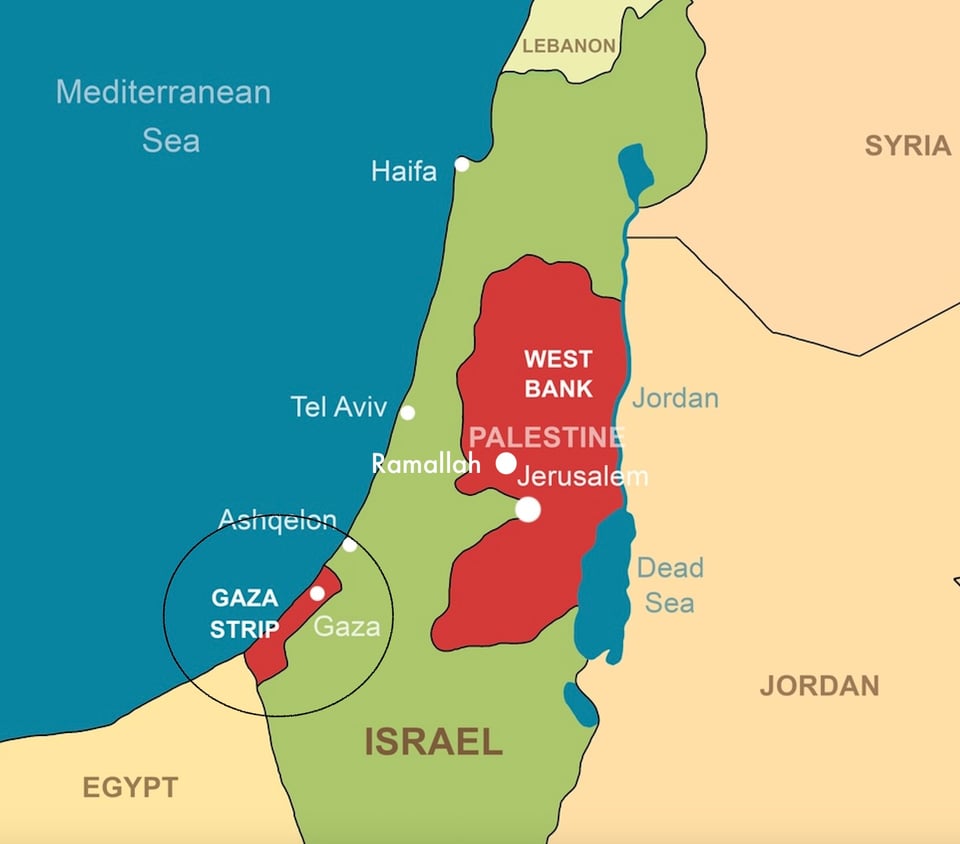The Edward Said National Conservatory of Music
Dear Friends,
We woke up last week to the devastating nightmare of renewed Israeli attacks on Gaza, alongside Israel’s total blockade of desperately needed food, water, medicine, and fuel for 2 million people who are trapped there. People here in the West Bank - all feeling connected and many with family members in Gaza - are heartsick and distraught.
For almost 20 years, Israel (with the cooperation of Egypt) has imposed an air, land, and sea blockade on Gaza. Israel has controlled everything and everyone that enters and leaves the territory. The Gaza Strip has been described as a concentration camp and as an open-air prison, because the people there have not been able to live freely with basic rights on their land, and they have not been allowed to leave. There was no peace before October 7: the United Nations described Gaza as ‘a disaster’ and ‘unliveable’ as far back as 2018. Israel has not permitted tourists in Gaza for more than 20 years.
I have never been to Gaza, so I wondered what I could write about it. The answer: the work of the Edward Said National Conservatory of Music (ESNCM).
I recently visited the Conservatory’s Ramallah branch, a joyful place filled with students and teachers, music lessons, and choral practice.
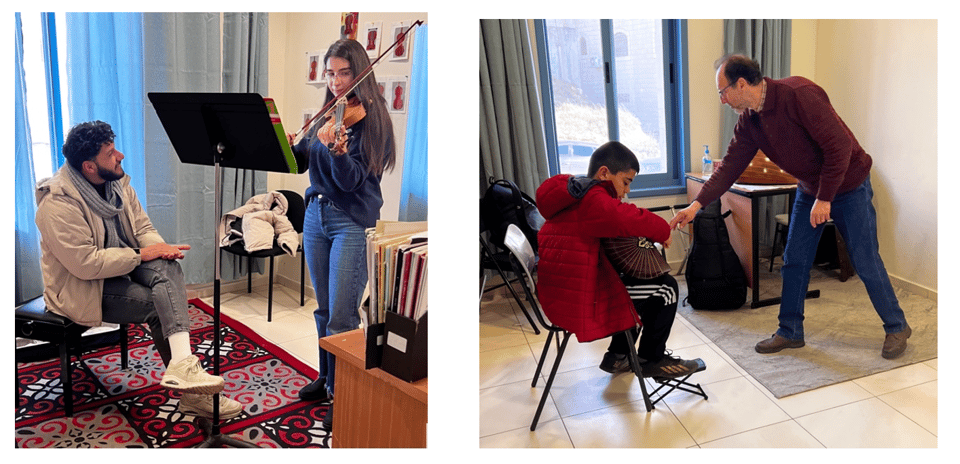
The Conservatory provides teaching and other programming in Ramallah, Beit Sahour (Bethlehem), Jerusalem, and Gaza, all dedicated to teaching and promoting music to Palestinians wherever they are. The Nablus branch has been closed temporarily due to Israeli restrictions on movement there.
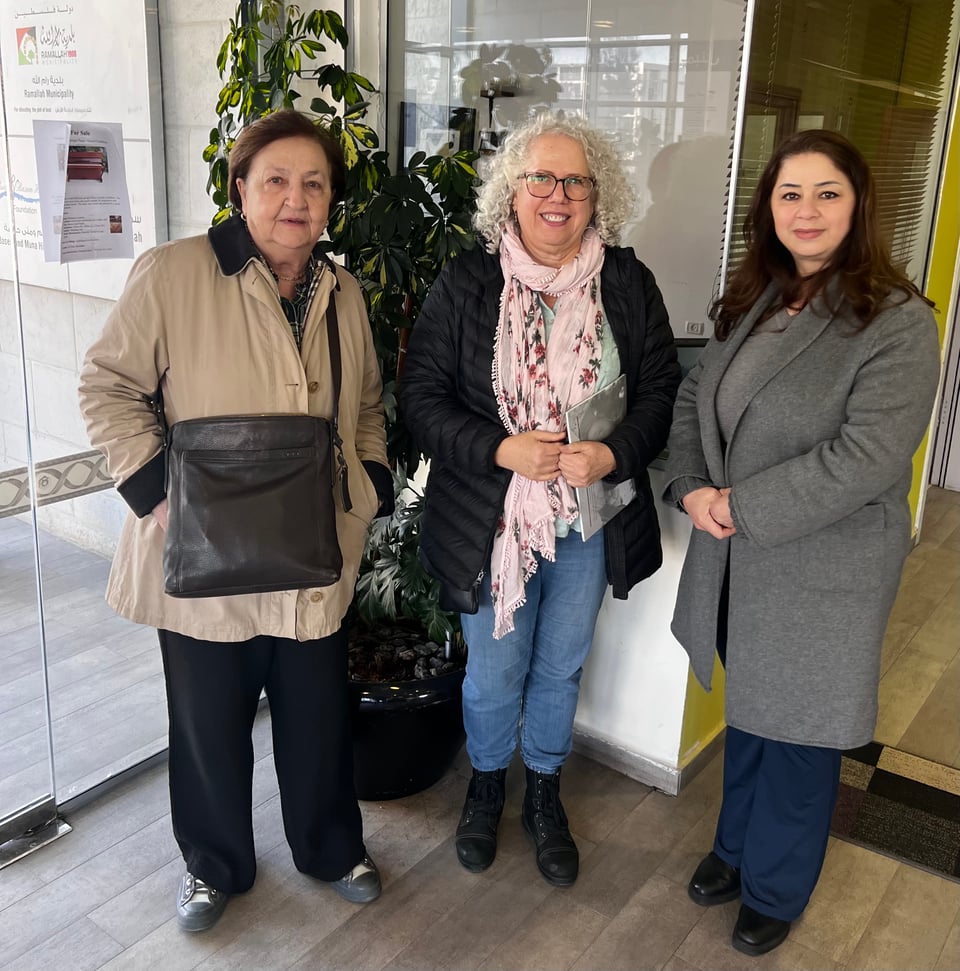
The Conservatory runs Arabic music groups, classical chamber groups, jazz bands, and two orchestras: the Palestine Youth Orchestra and the Palestine National Orchestra. Music camps are also held several times a year.
Since the onset of the latest war on Gaza, the Conservatory has adopted an emergency plan that has focused on supporting music teachers and students there, and providing arts programming for children who are surviving devastating hardship.
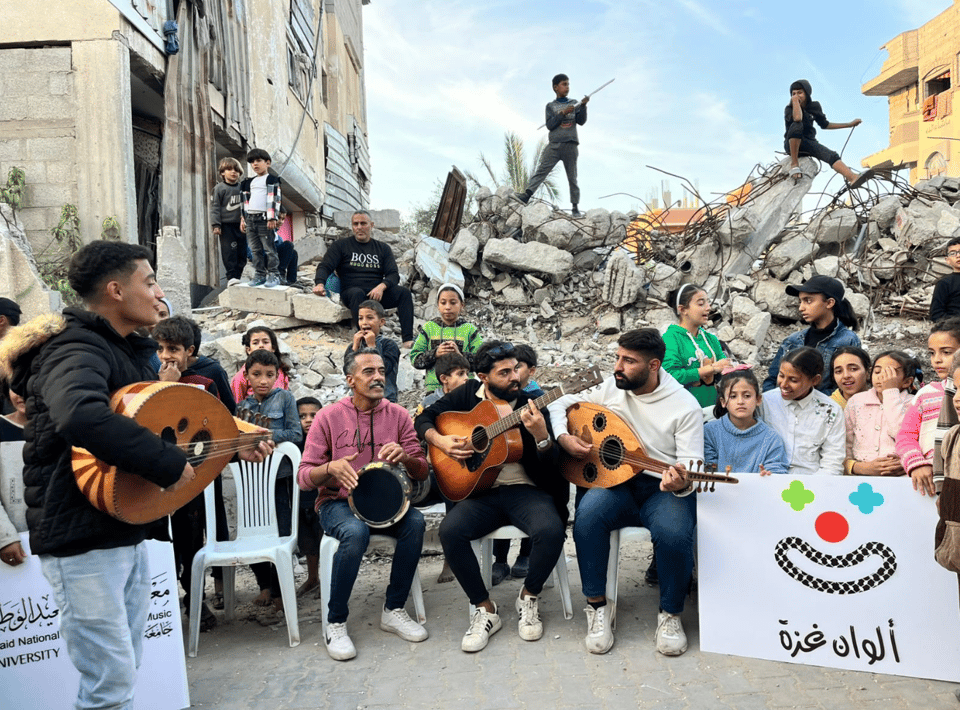
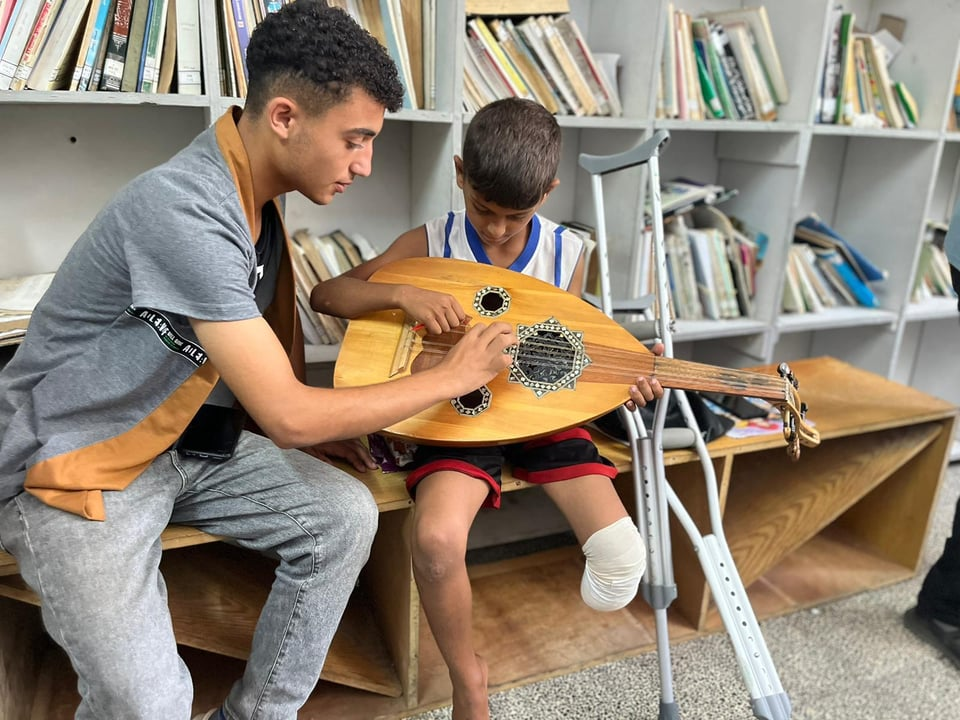
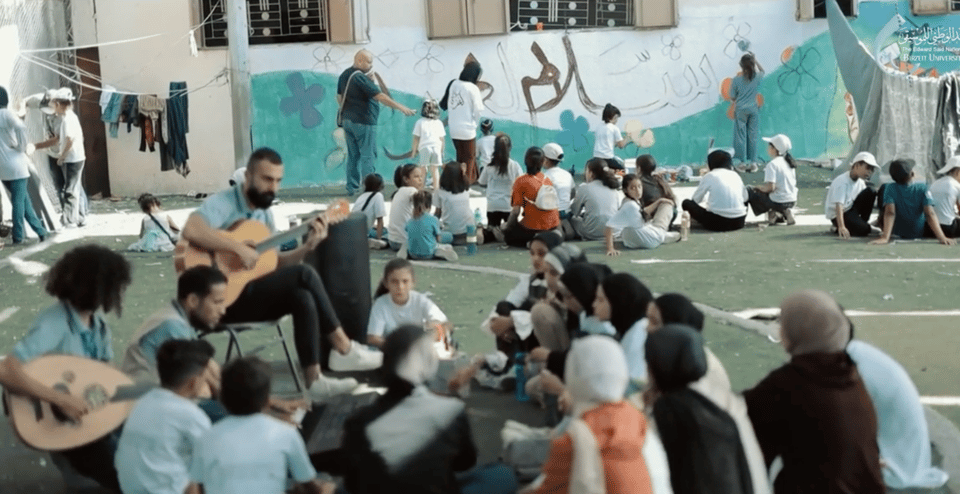
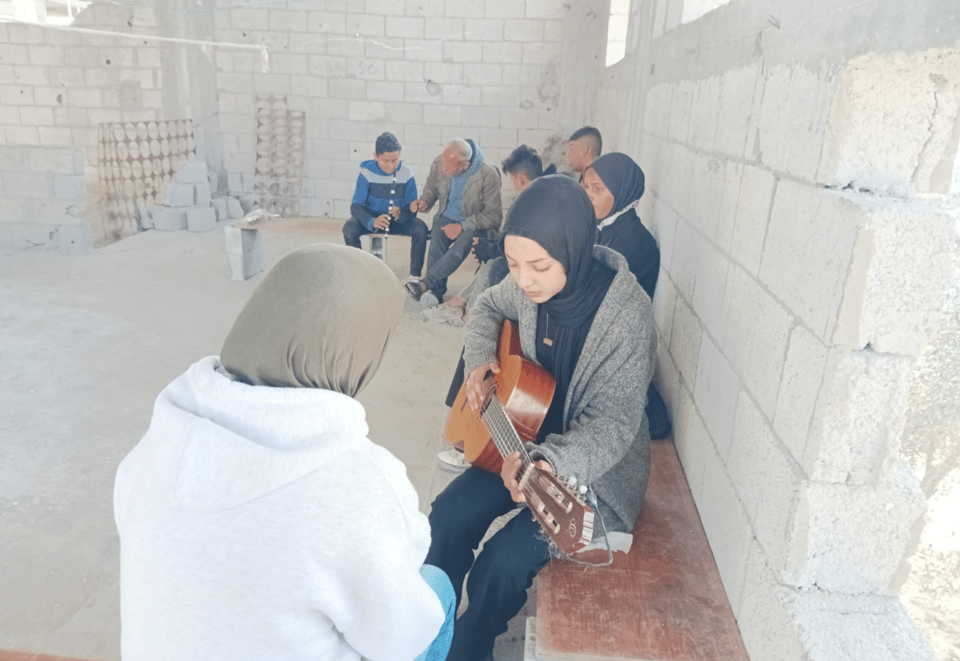
ESNCM has dedicated its work and activities since October 7, 2023 to support Gaza and its steadfast people. At this year’s Christmas concert in Jordan, the Palestine Youth Orchestra, the ESNCM Choir, and the Amman Choir performed a powerful piece called Mary of Gaza.
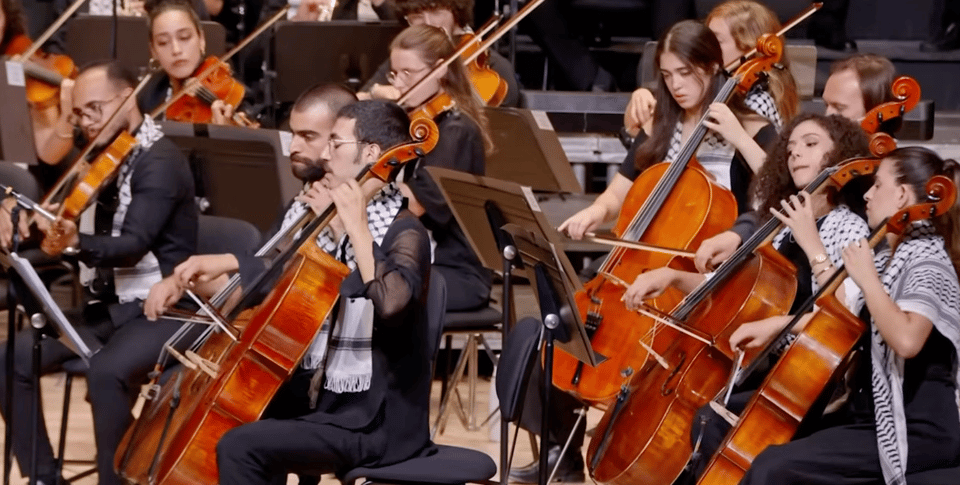
Here is a short excerpt of some of the powerful lyrics from this stirring performance:
Peace is for others. It is for children other than mine
Peace is for silence after our massacres
Peace is for silence before our massacres
Peace is for silence amid our massacres
Peace is for silence when we scream
And silence when we are silenced
Peace is the voice that orders
kill them, kill them, kill them, kill them, kill them,
and then kills us with silence.
Peace on earth is not for us
not for my son, not for yours
Take everything, O God, and keep us here
Close to our sea and the graves of our loved ones and our homes, here
We will not disappear. Close we will remain.
Take us or keep us if you wish
We will not disappear. Close we will remain
I will sing in the name of 20,0000, 40,000, risen in this land of ours
O God, peace on this earth will be mine, and then yours
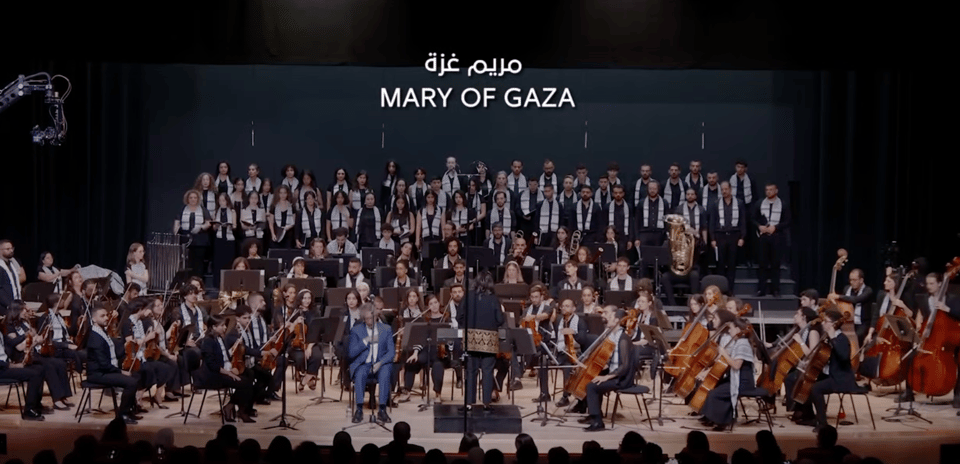
Special thanks to ESNCM’s Executive Director Sima Khoury Odeh and Mohammad Maragha, Programs and Concerts Director, for the warm welcome and for sharing information with me. The Conservatory is deeply grateful for support, which can be made through tax-deductible donations at this link.
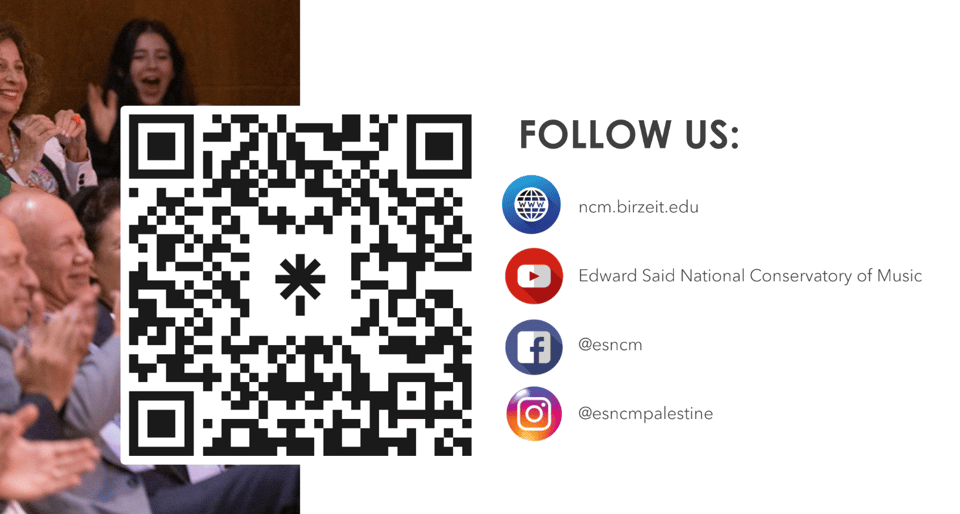
Salaam,
Nancy
SOME THINGS TO KNOW ABOUT GAZA:
Gaza is bordered by Egypt, Israel, and the Mediterranean Sea (map below)
Half of Gaza’s residents are under 18. A 16-year old child in Gaza has survived not just the last year and half, but also six other Israeli bombardments, in 2008, 2012, 2014, 2021, 2022, and May 2023.
At the end of 1948, Gaza was part of Egypt. Following the 1967 war, Gaza was occupied by Israel (along with the West Bank and East Jerusalem)
In spite of the withdrawal of Israeli settlements from Gaza in 2005, Israel (with Egypt) has enforced a blockade, controlling everything that enters and leaves the enclave - including food, medicine, people, water, and electricity. For this reason, Gaza is still considered to be occupied.
It is against international law for a state to attack a territory it occupies. It’s not a war when one side decides whether a trapped population can have food, medicine or electricity.
Most Gaza residents are descendants of refugees from land that became Israel in 1948 and 1967 (this graphic shows the origins of Gaza residents from across what is now Israel)
Prior to October 7, 2023, people in Gaza did not have enough water or electricity (both controlled by Israel). The unemployment rate in Gaza in early 2023 was more than 50%, and the poverty rate was 64%.
Palestinians in Gaza must obtain a permit from Israel to leave the territory. Permits for medical purposes are often delayed and denied, as described in this report from 2018. Israel typically refuses to allow Gaza residents to travel even to the West Bank.
In 2015, a woman from Gaza was not allowed to travel through Israel to Jordan on her way to her own wedding. The Israeli authorities found she did not meet the criteria for travel, which is only granted in exceptional humanitarian cases.
“If your heart continues to hurt, it's an indication that you are still human. That you still care for others. That you still have empathy - something millions around the world seem to lack. Keep doing what you can so this can end. This will end.” - Murad Nofal, co-founder, Wear the Peace
